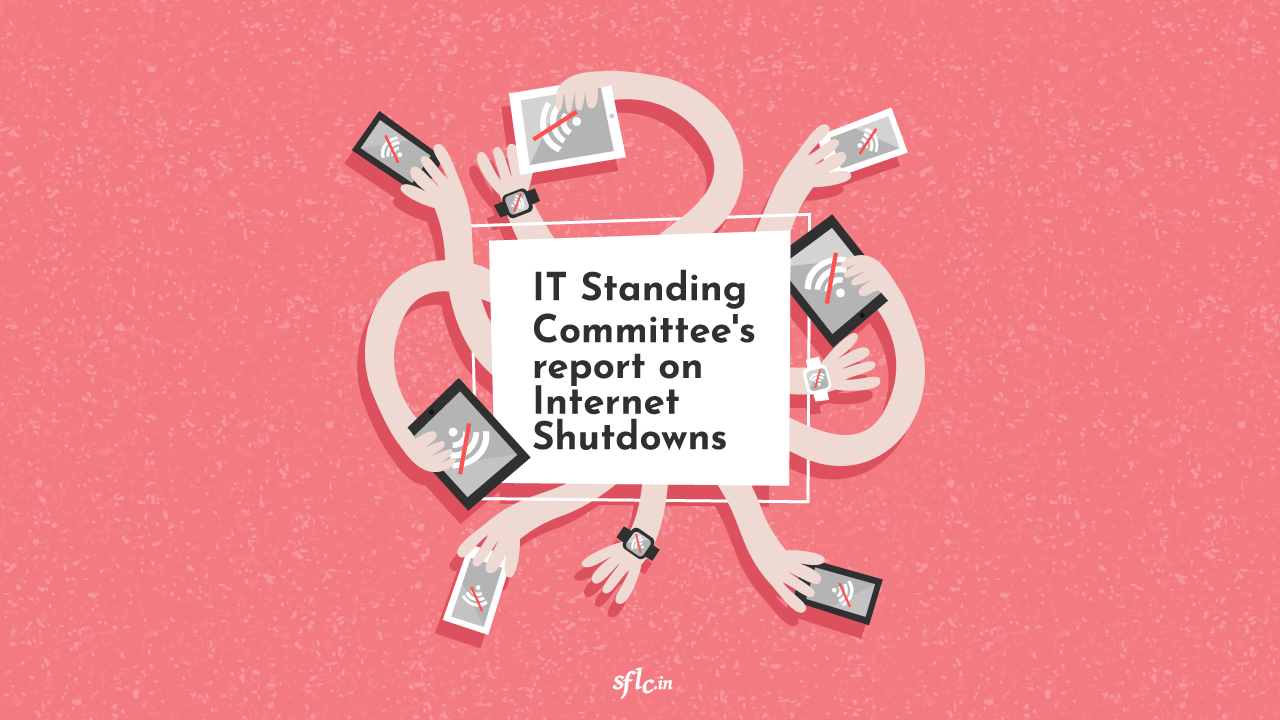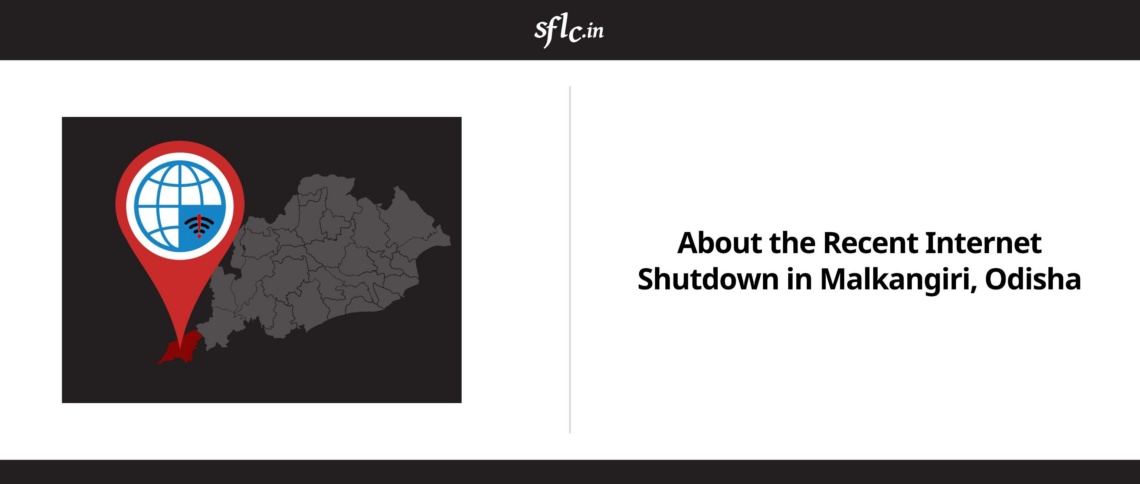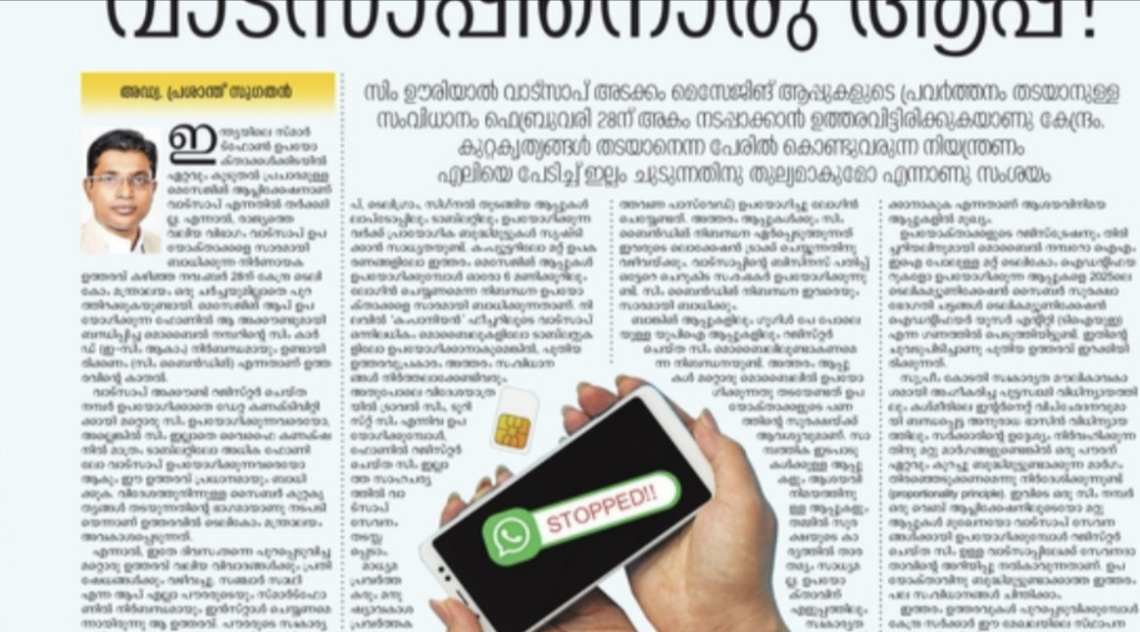INTRODUCTION
In recent years, internet shutdowns have become a common answer to any day to day law and order issue or a tool of administrative convenience. It has increased to such an extent that India is now a world leader in the number of Internet shutdowns imposed and no other country is even remotely close to the number of shutdowns imposed in India. The internet shutdowns tracker maintained by us shows that in the last 9 years, there have been 550 shutdowns and over 50 percent of them were imposed after 2017.
Internet suspension is governed by Temporary Suspension of Telecom Services (Public Emergency or Public Safety) Rules, 2017. Prior to notification of these rules the state government was allowed to suspend the internet through section 144 of the CrPC. After the notification of these rules state governments were meant to follow the law laid down under them, despite that states continue to suspend the internet under S. 144. This practice was criticised by the Supreme Court as well in the case of Anuradha Bhasin v Union of India, yet it continues.
Understanding the problems that such rampant internet shutdowns pose to the economy and the liberties of individuals, The Standing Committee on Communications and Information Technology (hereinafter “the Committee”) headed by Dr. Shahi Tharoor , decided to undertake a detailed review of the governing legal framework, procedure adopted by the states, safeguards to protect from misuse and other ancillary issues. This post will briefly cover the issues that were discussed by the committee and the observations and recommendations made by the committee.
ISSUES IDENTIFIED
-
What are the grounds for imposing an internet shutdown
The first issue before the committee was what are the grounds for issuing internet suspension and if these grounds have any objective parameters for determination. The submissions from the DoT (Department of Telecommunication) and MHA (Ministry of Home Affairs) reflect that “public emergency” and “public safety” are the only grounds for which the internet can be suspended. However, no clear definition of these terms can be found in the current law, neither are there any codified objective parameters.
-
Official Data on internet shutdown
The issue to be considered was whether there is any official centralised data which provides for the number of shutdowns imposed and other related information. The DoT and MHA submitted that they have not maintained any such data as internet suspension is a state subject, therefore out of their purview. However, governments of Delhi, J&K and Bihar came forth with some data. It must be noted here that the government of Delhi in their response maintained that they have not ordered a single internet shutdown in the last two years. However, according to the internet shutdowns tracker there have been 4 internet shutdowns in Delhi from 2019 to 2021.
-
Suspension under Section 144 of the Code of Criminal Procedure
The committee considered the question as to whether the internet can be suspended under Section 144 of Cr.PC even after the notification of Telecom Suspension Rules. DoT clarified that the law governing suspension of the internet is the Telecom Suspension Rules and suspension of internet services can be orderedonly under that.
-
Composition and Powers of the Review Committee
Rule 2(5) provides for the constitution of a Review Committee by each state government. The members of this committee on state level are Chief Secretary, Secretary Law or Legal Remembrancer Member In-Charge, Legal Affairs and Secretary to the State Government Member (other than the Home Secretary). It was observed by the Committee that the members of the Review Committee are largely confined to the executive branch. Thereby, raising questions on the independence and transparency of the Review Committee.. The DoT responded that the Law Secretary is a senior district judge and can be considered as a judicial member, therefore the composition of the Review Committee is balanced.
With respect to the powers of the Review Committee the question that arose before the committee was whether the Review Committee has power to countermand the order of suspension. It was submitted by the DoT that the Review Committee reviews whether the decision to suspend the internet was in accordance with the provisions of the rules. In addition to that, there is no information available where the committee has countermanded a suspension order.
-
Whether states have SOPs and other safeguards in place
The committee then attempted to assess whether there are any SOPs issued by the state governments in order to place safeguards. The DoT responded that there is no information available on this and the Bihar government pointed out the SOP notified by it within 6 months of notification of the rules. The SOP lays down that the report must come from a District Magistrate & SP or Divisional Commissioner, the internet suspension will only be done when there is no other alternate way to stop the messages. However, the grounds laid down by this SOP even include rumour mongering which can lead to breach of public peace and law and order. Further, it provides that telecom suspension shall not cover government networks.
-
Efficacy of Internet Suspension
Committee then analysed the efficacy of an internet suspension in achieving the intended purposes. The committee enquired whether there have been any studies to understand overall impact of a Shutdown, to establish a correlation between internet and riots and to understand the assumption that internet shutdown leads to better law and order and reduced risk of violence. However, no such study has been conducted by the DoT or MHA. Neither any less restrictive measure has been explored.
-
Stakeholder Consultation
The committee also enquired if there has been any stakeholder consultation when the maximum time (15 days) for an internet suspension was determined. The submissions of DoT and MHA show that no telecom operators, internet services providers or civil society organisations were approached or consulted. Neither are there any definite mechanisms to hold such consultation.
OBSERVATIONS AND RECOMMENDATIONS
The committee observed that use of the internet as a medium for conducting business and exercising liberties has become the new normal. Therefore, it is “essential that any interruption to these services should be avoided and where unavoidable, the power to interrupt needs to be exercised with abundant caution.” It further observed that the Telecom Suspension Rules and the safeguards thereunder are inadequate and need to be reviewed. There is a need for the Department and Ministry to ensure that these rules are adhered to in letter and spirit and in addition to that there needs to be a review done by the DoT in consultation with MHA and Ministry of Law and Justice. Following are the issue specific observations and recommendations made by the committee:
-
Grounds for Internet Suspension
The committee observed that because of lack of objective parameters to determine the merit of issuing an internet suspension order, these shutdowns have been ordered based on a subjective assessment and are largely an executive decision. In addition to that, due to lack of a clear cut definition of “public emergency” and “public safety” states resort to internet suspension for the reasons not so pressing and are used as a tool of policing and for administrative purposes.
Thus the committee recommended two things: a) a proper mechanism is put in place at the earliest to decide on the merit or appropriateness of telecom/internet shutdowns. b) “public safety” and “public emergency” are defined clearly so that there is no ambiguity and no scope of misuse.
-
Maintenance of Official Data on Internet Shutdown
Committee stated that it is not satisfied with the response of the DoT and MHA. It recommended in strong terms that a mechanism must be established by DoT and MHA at the earliest to maintain a centralised database of all internet shutdown orders across the country which will contain various types of information- number of suspensions, reasons for suspension, duration, decision of competent authority, decision of the Review Committee, S 144 suspension etc. It further recommended that this information must be made available to the public as it will help in course correction.
-
Use of Section 144 of CrPC to order Internet Suspension
The committee observed that there is an urgent need to sensitize states that suspension can no longer be issued under S. 144 of CrPC. The proper mechanism to issue shutdowns is by using Telecom Suspension Rules. It also recommended establishing a mechanism to monitor as the same is not done by the states. In addition appropriate action must be taken against states who order a shutdown under S. 144.
-
Composition and Powers of the Review Committee
The committee observed that despite there being a Law Secretary as a member of the Review Committee, the composition is still largely confined to the executive branch and the Review Committee must be made broadbased. Therefore, more non-official Members such as retired Judges, Members of the public, etc. are to be included so that the Review Committee can better gauge the situation in a comprehensive and broad manner. It suggested that even an MLA or MP can also be made a part of this Review Committee.
In addition to that, the committee observed that the constitution of a Review Committee is an essential prerequisite to ensure adequate checks and balances. Therefore, they are to take steps to ensure that Review Committees are constituted in all states and to maintain data on the Review Committee formed by the states and the decisions taken by these Review Committee.
-
SOPs and Safeguards to be adopted by States
The committee observed that the DoT and MHA have failed to take any initiative for outlining any SOPs for the states to follow while ordering a shutdown. Due to these lack of guidelines the States get to resort to telecom shutdown on the “slightest pretext of maintaining law and order”. It further observed that leaving the job to formulate SOPs with the state will create confusion and non uniform SOPs will be there. Therefore, it recommended the DoT and MHA to devise SOPs and ensure that the Supreme Court mandated guidelines are followed strictly.
-
Effectiveness of Suspension
The committee noted that “the suspension of internet services greatly affects the local economy, healthcare services, freedom of press and education etc.” It also observed that “the perceived tradeoff of internet shutdowns leading to better law and order outcomes with reduced risk of violence or hate speech is dubious in its assumption.” It further observed that as per empirical study internet shutdowns are not effective in pacifying protests and often have unintended consequences of incentivising violent forms of collective action which requires less communication and coordination.
Based on these observations the committee recommended that a thorough study should be undertaken by the DoT or MHA to assess the impact of the internet shutdown on the economy and its effectiveness in dealing with public emergency.
-
Consultation with Stakeholders
The committee observed that a wider consultation process with other stakeholders including NGOs working in the field of internet freedom, Telecom Service Providers and commercial bodies, is vital. Therefore the committee recommended that the DoT must lay down a mechanism for regular consultation with stakeholders in order to formulate a holistic policy. It also stated that the committee would like to be apprised of the action taken by the DoT in furtherance of the recommendation.
- Selective Banning of Services
The Committee observed that the possibility of banning selective services should be explored as the least restrictive mechanisms should be imposed.
In addition to the above observations and recommendations, the committee also made recommendations related to sensitization of states with respect to judicial precedents, the principle of proportionality and the procedure for lifting of internet shutdowns,
WHAT NEXT
This report will now be tabled in the Parliament. According to Rule 331N of Rules of Procedure and Conduct of Business in Lok Sabha Sixteenth Edition, these reports have a persuasive value and are not binding on the Parliament. However, the Ministry to whom the recommendations are directed are to file an “Action Taken Report” to the committee providing whether they have accepted the recommendations and are acting on them or not. These reports are to be presented within 3 months.
SFLC.IN will be following up with the MPs who are members of the Standing Committee and will also submit representations.



